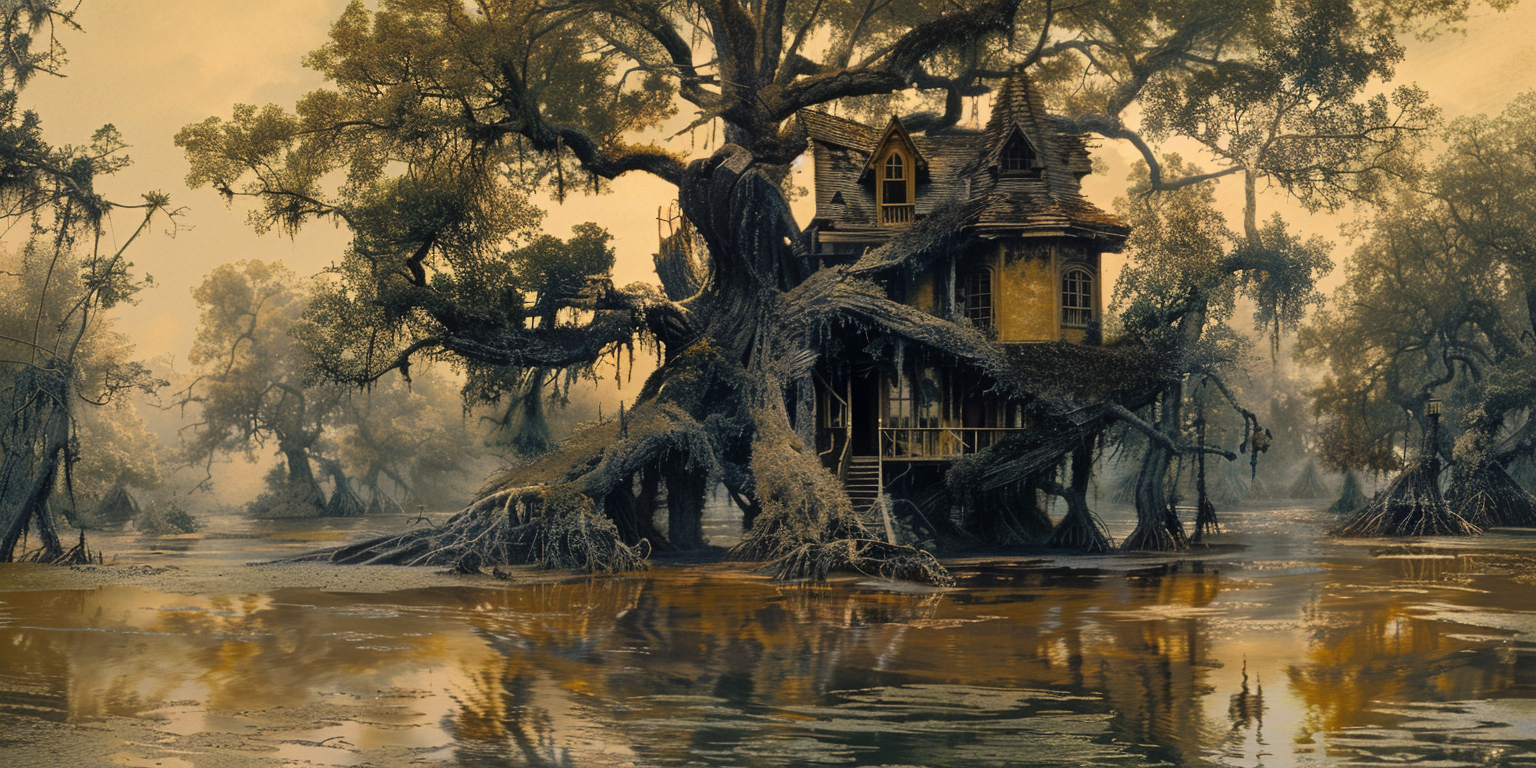Ecosystem of Nuskan Swamps, 271 PT
The water rippled out around her ankles as Karinth crept away from the edge of the settlement and deeper into the wilderness. The warm mud cushioned her bare feet, squishing between her toes, and the slightly sulphuric scent of the water mixed with the smell of wet wood caught on the air. It was the aroma of home.
Background
The swamps of Nuskan are inhabited by the Macrans, and have been their home for many millennia. As there have been a lot of ecological changes in the area in that time, the focus of this article is the ecosystem of this area as it was in 271 PT, just before the Primian peace treaty was signed, and they began extracting minerals from the surrounding ocean. Below is a map of Nuskan, which can be used to show inhabited areas and also ecological points of interest.
Environment
Water
Being on the coast, the water of the Nuskan swamps is brackish. A large amount of the area is always at least partially submerged (shown as the Lowest Area on the map). Fresh water flows in through the three rivers, diluting the salt water.Sunlight
The Nuskan Swamps get a reasonable amount of sunlight, but are prevented from being overwhelmed by the thick atmosphere around the planet. However, the canopy can be thick, so there are areas where the sunlight does not penetrate.Soil & Nutrients
The Nuskan Swamps are surrounded on the south and west sides by large rocky crags. Rock runs beneath the whole area, but in most areas there is at least several metres of densely packed earth covered by a thick layer of mud and silt. These layers are nutrient rich.Meteorology
Hot Season
Highs: 35°C (95°F)
Lows: 30°C (86°F)
Humidity: 60%
Precipitation: 170mm (6.7inch) (monthly)
Lows: 30°C (86°F)
Humidity: 60%
Precipitation: 170mm (6.7inch) (monthly)
Damp Season
Highs: 30°C (86°F)
Lows: 25°C (77°F)
Humidity: 75%
Precipitation: 300mm (11.8inch) (monthly)
Lows: 25°C (77°F)
Humidity: 75%
Precipitation: 300mm (11.8inch) (monthly)
Wet Season
Highs: 35°C (95°F)
Lows: 25°C (77°F)
Humidity: 90%
Precipitation: 600mm (23inch) (monthly)
Lows: 25°C (77°F)
Humidity: 90%
Precipitation: 600mm (23inch) (monthly)
Temperature
Wind
Biotic Factors
Decomposers
There are three main groups of decomposers which call the Nuskan Swamps home.
The first group are the microbes which live in the Kired, mud which is found in copious amounts across the swamps. The second are forms of fungi which grow on the trees and any structures in the swamp which stretch up above the brackish waters. The third are bacteria which live in the swamp water. They are particularly good at breaking down those hard-to-erode substances.
Producers
There is a vast array of flora in the Nuskan Swamps, but the largest by far is Fenfolium Abordormusia, colloquially known as hometree, which is the base for a lot of the other producers. Their canopy dictates the amount of sunlight which penetrates the swamp, and as a result there are many vines, mosses and algae which grow on and around these trees.
At the edges of the swamp, in some of the areas which aren't so consistently flooded, there are tall grasses and some shrubbery.
Consumers
Primary
There are several different types of primary consumers, most of which live below the water line. These include plankton, shrimps, different types of shellfish, small fish and crabs. In addition there are insects aplenty which live on the hometrees and in amongst the flora. For example:
- Rereed (Shellfish)
- Spotted Blue (Fish)
- Mud Wobbler (Crab)
- Water Hopper (Insect)
Secondary
Unlike the primary consumers, the majority of secondary consumers live on or above the waterline and prey mainly on the insects there. These include frogs, lizards and a wide variety of birds. There are also otters, snakes, turtles and fish which eat the creatures which live underwater. For example:
- Kislop (Frog)
- Red Headed Aliap (Lizard)
- Striped Snapback (Snake)
- Numsonter (Otter)
Tertiary
There are quite a few tertiary consumers who call the swamp their own. In the sky and the canopy live several different types of hawks, both large and small. Further down the hometrees there are monkeys as well as larger snakes, and in the water, are some large and rather dangerous reptiles. For example:
- Vont (Hawk)
- Hodet (Hawk)
- Moochin (Monkey)
- Gacer (Reptile)
Noteable Symbiotic Relationships
A lot of creatures rely on the Fenfolium Abordormusia. Hanid, for example, is a form of moss which has a mutualism relationship with the tree, passing nutrients it doesn't need into the bark, while the hometree provides it with a safe place to grow. There are also vines which have more of a commensalism or parasitism relationship with the tree.Sapient Impact
In the last millennia, the Macrans have made their home here, but have worked hard to work with the existing ecosystem. There have, of course, been some balance upsets, particularly where the Macrans have taken the position of some of the larger consumers, diminishing but not depleting the population of the large reptiles, They have also caused a mass migration of the bears which previously lived here.
Related Articles
| People | Macran, Peacekeeper, Pachian, Family of the Dark Green Moss |
|---|---|
| Locations | Nuskan, P'Ache Micro, P'Ache Solar System, Peacekeeper Territories |
| Species | Macran, Hometree - Fenfolium Abordormusia, Hanid |
| Decomposers | Kired |
| Manuscripts | Chapter 1: 13 Four 271 PT in Tales from P'Ache |
| Other | Dark Green Moss Family Home, Family of the Dark Green Moss |


This is such a great overview article. I loved the sections on decomposers, producers, and consumers. So fun. :D Also the little weather overviews are fun.
Explore Etrea | March of 31 Tales
Thank you! I'm going to use it as a jumping-off point for more worldbuilding.